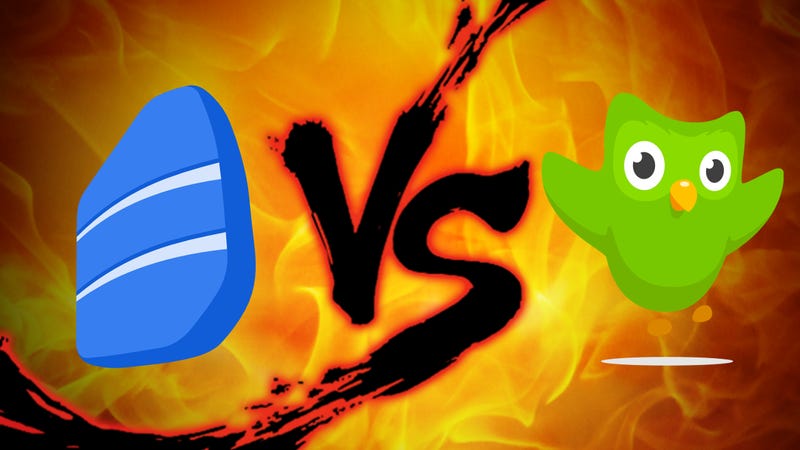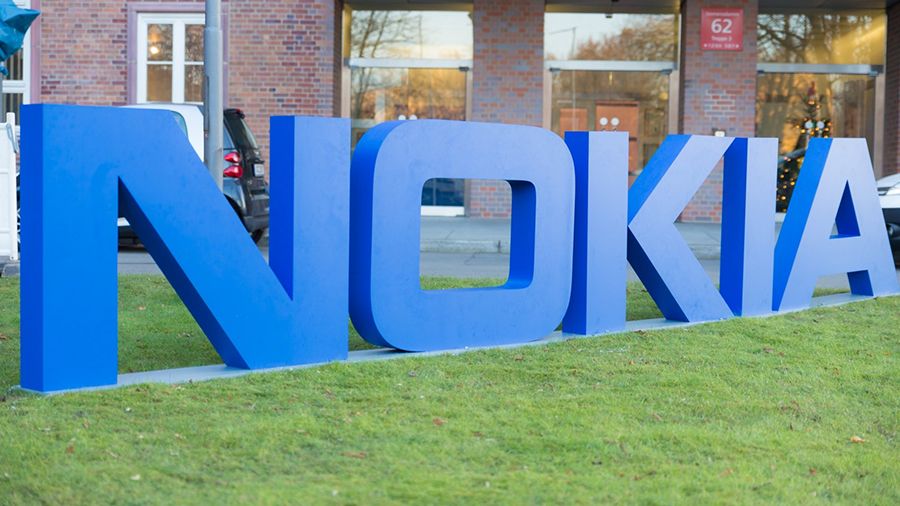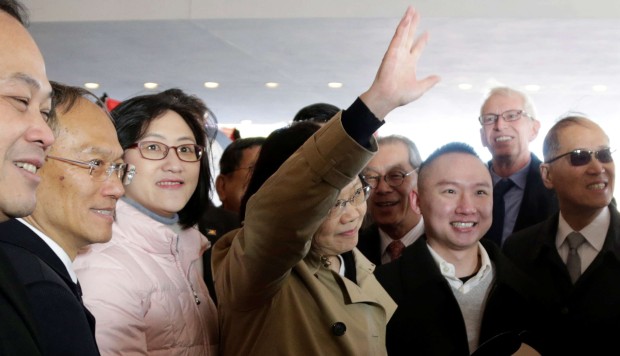 In a corner of LG’s sprawling, dripping-with-technology booth at the Las Vegas Convention Center sat a circular table populated by a group of small, futuristic snowmen. Each of them sported a black touchscreen display showing a pair of electronic eyes that would intermittently squint as if they were smiling at you.
In a corner of LG’s sprawling, dripping-with-technology booth at the Las Vegas Convention Center sat a circular table populated by a group of small, futuristic snowmen. Each of them sported a black touchscreen display showing a pair of electronic eyes that would intermittently squint as if they were smiling at you.
On a large screen nearby, a video showed one of these gizmos, the LG Hub Robot , calling out in a soothing tone: «Hello. I’m your personal assistant at home. I learn your lifestyle to better serve you. »
This year’s CES tech show in Las Vegas highlighted how our technology is finding its voice, with makers of cars, appliances and speakers starting to let people control their products simply by talking to them. A big catalyst for this trend is Amazon, whose Alexa voice assistant was announced as a new addition to dozens of devices at the show , including the LG robots, which are expected to go on sale this year.
At CES, people say hello to LG’s new talking robots, which can play music, read you a book or activate an LG robot vacuum.
All this voice-enabled stuff points to a future in which people can interact with their devices without even having to get off the couch to grab a remote control. Adding more voice to technology could make complicated systems, like an automated home, easier to use than they’d be with a busy touch display or a remote bristling with buttons. The ubiquity of Alexa at the show — even if Amazon didn’t have a booth here — underscores the importance of these assistants, which include Apple’s Siri, Google’s Assistant and Microsoft’s Cortana.
«In the end, the assistant is going to be pervasive when you’re at work, when you’re in the car, when you’re at school, whatever it might be,» Rishi Chandra, vice president of product management for Google Home, said during a smart-home panel Thursday.
People, though, will have to weigh the positives of these digital helpers against potential drawbacks, including privacy worries about Wi-Fi-enabled microphones that are always listening for an activation word like «Alexa. » Also, making some functions too easy may cause new headaches, as proved by an intrepid 6-year-old who used an Alexa-powered Amazon speaker to buy a $160 dollhouse and sugar cookies.
Bankowski shows off Ford’s chattier features.
Soon after I met the LG robots Friday, I found myself sitting in a Ford C-Max sedan parked at another section of the convention hall. There, Ford apps expert Stefan Bankowski demonstrated the car’s Alexa-powered capabilities. Hitting a microphone button on the dashboard touchscreen, he asked Alexa to play Jeopardy, tell him a joke and get him directions to the nearest Starbucks. The same friendly Alexa voice used in Amazon’s Echo speaker, the first device to use Alexa, responded to each question.
«You take the commute and enhance it. These are things you just couldn’t do before,» Bankowski said, noting that he now likes to play Jeopardy in the car on the way to work.
Integrating these features aren’t just for fun. Adding more voice functions to the car can make it safer, Bankowski added, since drivers won’t have to fumble around as much with the control panel. By summertime, all Ford and Lincoln vehicles in the US that use Ford’s Sync 3 system will get upgraded with Alexa.
Discussing another deeper value for voice assistants, Pamela Fahrendorf, a former professor from Durant, Oklahoma, visiting the show, said she could use a voice assistant to ease some of the physical difficulties she has from Parkinson’s Disease.
«My fingers don’t always work as well,» she explained.
At Dish’s booth, I went into a glass-enclosed room, where a spokeswoman told an Amazon Echo Dot speaker to change the channel on a TV to the Cooking Channel. «Tuning to the Cooking Channel, showing ‘ Pizza Masters ,'» Alexa responded.
The Alexa integration with Dish ‘s Hopper 3 set-top box, available by midyear, can also let people search for movies by genre or actor, skills the Apple TV already has using Siri.
A Whirlpool Cabrio dryer will soon be able to connect with an Amazon Echo to start, stop or pause cycles.
At the Sands center, Whirlpool internet of things designer Mike Jakeway explained how Alexa will be able to control the company’s new washers, dryers , ovens and refrigerators, with the features rolling out sometime this year. Need to preheat the oven? Just ask your Echo. Want to check how much time is left on the wash in the basement? Alexa will know that one, too.
«It’s all about taking friction out of people’s lives,» Jakeway said, standing by a washer and dryer set next to an Echo speaker at the Whirlpool booth.
Mike George, Amazon’s vice president of Alexa, told me Thursday that his company is working on teaching Alexa to become more conversational, allowing people to talk more naturally to the assistant instead of using it just for quick, one-off voice commands.
«She will become smarter and use that information to have much more natural interactions with you,» he said.
While Alexa has taken a clear lead in voice partnerships , we’re still in the early stages of creating chatty devices. That means Amazon, Google, Apple and others will have to keep pushing to convince customers these features will make their lives easier, not just filled with more technology.
«If people can get more control and offload some of the mundane hassles of daily life,» John Curran, an Accenture senior executive, said ahead of the show, «I think they’re going to be thrilled, and I see that as a real potential for growth. »
You’ll soon be able to ask Alexa to start Whirlpool’s Smart Care Washer and Dryer Combo.
© Source: https://www.cnet.com/news/our-gadgets-get-mouthy-ces-2017-amazon-alexa/
All rights are reserved and belongs to a source media.
 Chicken under a brick isn’t a new dish, and it’s most often prepared on the grill, but this method from Bon Appetit combines everything I love about a 30 minute roast chicken: the time saved, the crispy skin, and of course, the hands-off preparation. In just a little time, you have a meal for the family.
Chicken under a brick isn’t a new dish, and it’s most often prepared on the grill, but this method from Bon Appetit combines everything I love about a 30 minute roast chicken: the time saved, the crispy skin, and of course, the hands-off preparation. In just a little time, you have a meal for the family. 

 There are so many language learning resources available now it can feel a bit overwhelming. Rosetta Stone and Duolingo are two of the most popular choices, but they each have their own perks and quirks. Let’s translate their key features so you can pick the right tool for your language studies.
There are so many language learning resources available now it can feel a bit overwhelming. Rosetta Stone and Duolingo are two of the most popular choices, but they each have their own perks and quirks. Let’s translate their key features so you can pick the right tool for your language studies. 
 Nokia could be about to introduce a smart, AI-powered assistant app of its own called Viki, if a trademark application just unearthed by Dutch blog GSMinfo is anything to go by.
Nokia could be about to introduce a smart, AI-powered assistant app of its own called Viki, if a trademark application just unearthed by Dutch blog GSMinfo is anything to go by. 
 Samsung’s 4D VR rides tilt you every which way — including upside down — as they simulate space racing and other demos.
Samsung’s 4D VR rides tilt you every which way — including upside down — as they simulate space racing and other demos. 
 In a corner of LG’s sprawling, dripping-with-technology booth at the Las Vegas Convention Center sat a circular table populated by a group of small, futuristic snowmen. Each of them sported a black touchscreen display showing a pair of electronic eyes that would intermittently squint as if they were smiling at you.
In a corner of LG’s sprawling, dripping-with-technology booth at the Las Vegas Convention Center sat a circular table populated by a group of small, futuristic snowmen. Each of them sported a black touchscreen display showing a pair of electronic eyes that would intermittently squint as if they were smiling at you. 
 William A. Jacobson
William A. Jacobson 
 BEIJING—An official with President-elect Donald Trump’s transition team said Saturday that neither Mr. Trump nor transition officials would be meeting with Taiwanese President Tsai Ing-wen, who stopped in Houston during her trip to Central America.
BEIJING—An official with President-elect Donald Trump’s transition team said Saturday that neither Mr. Trump nor transition officials would be meeting with Taiwanese President Tsai Ing-wen, who stopped in Houston during her trip to Central America. 
 Taiwanese President Tsai Ing-wen did not meet US president-elect Donald Trump or members of his team during her stopover in the United States on the weekend, avoiding a move that would have riled a jittery Beijing. A spokeswoman for Trump’s transition team, Jessica Ditto, said in an email on Saturday there would be no meetings between Tsai and officials representing the president-elect in the US, the Associated Press reported. Tsai arrived in Houston on Saturday on her way to Honduras, Nicaragua, Guatemala and El Salvador. She will stop off in San Francisco after her visit to Central American allies before flying back to Taiwan. Analysts said any meeting between Tsai and Trump officials would have seriously angered Beijing, which is concerned Trump may abandon decades of US policy towards Taiwan when he takes office. Trump has questioned why the US should continue to abide by the one-China principle under which it does not recognise Taiwan as a sovereign state. Beijing was also angered by a telephone call between Tsai and Trump in December when she congratulated the president-elect on his win in the polls. Taiwan and the mainland have been governed separately since Kuomintang forces fled to the island in 1949 after losing the civil war to communist forces. Beijing considers Taiwan a breakaway Chinese province. Tsai kept a low profile after her arrival in Houston, with analysts suggesting this was the best strategy with the risk of the stopover increasing the ire of Beijing. Taiwanese media reported she avoided interviews in Houston and barred all people attending a dinner hosted by ethnic Taiwanese in the southern US city from bringing cameras or smartphones to try to reduce publicity. The only remarks she made to journalists waiting in freezing weather outside her hotel were, “It is too cold! Get in. Don’t stand outside,” Taipei-based Central News Agency reported. But she did meet several US dignitaries, according to Taiwanese media. Texas Republican Congressman Blake Farenthold and the chairman of the American Institute in Taiwan, James Moriarty, met her at the airport, along with Taiwan’s envoy to Washington, Stanley Kao. They accompanied her to a cancer centre and a museum displaying treasures loaned by Taiwan’s National Palace Museum. Taiwanese media also reported that Tsai met Houston’s mayor, Sylvester Turner, and Randall Schriver, a former deputy assistant secretary of state for East Asian and Pacific affairs at the State Department. They remained tight-lipped over what they had said. Chen Ming-wen, a legislator with the governing Democratic Progressive Party in Taiwan who is accompanying Tsai on her trip, said Tsai was also expected to receive phone calls from other US political dignitaries and senators. Taiwan’s Presidential Office has declined to reveal the full itineraries for Tsai’s US stopovers in what observers see as a bid to play down the matter. William Stanton, a former director of the American Institute in Taiwan, the US representative office on the island, said Tsai was wise to maintain a low profile during her US stay. “No one wants bigger trouble now,” he said, referring to the phone conversation between Tsai and Trump that angered the mainland. Shi Yinhong, an adviser to Beijing’s State Council and director of the Centre for American Studies at Renmin University in Beijing, said Tsai was handling sensitivities over ties with the US intelligently. “Tsai Ing-wen has remained low key since that phone call with Trump. She has even ordered a ban on all members of the DPP from talking about Trump and cross-straits relations. She is smarter than you think,” he said. “She has tried her best to avoid giving [the mainland] any excuses to severely punish Taiwan.” Additional reporting by Catherine Wong
Taiwanese President Tsai Ing-wen did not meet US president-elect Donald Trump or members of his team during her stopover in the United States on the weekend, avoiding a move that would have riled a jittery Beijing. A spokeswoman for Trump’s transition team, Jessica Ditto, said in an email on Saturday there would be no meetings between Tsai and officials representing the president-elect in the US, the Associated Press reported. Tsai arrived in Houston on Saturday on her way to Honduras, Nicaragua, Guatemala and El Salvador. She will stop off in San Francisco after her visit to Central American allies before flying back to Taiwan. Analysts said any meeting between Tsai and Trump officials would have seriously angered Beijing, which is concerned Trump may abandon decades of US policy towards Taiwan when he takes office. Trump has questioned why the US should continue to abide by the one-China principle under which it does not recognise Taiwan as a sovereign state. Beijing was also angered by a telephone call between Tsai and Trump in December when she congratulated the president-elect on his win in the polls. Taiwan and the mainland have been governed separately since Kuomintang forces fled to the island in 1949 after losing the civil war to communist forces. Beijing considers Taiwan a breakaway Chinese province. Tsai kept a low profile after her arrival in Houston, with analysts suggesting this was the best strategy with the risk of the stopover increasing the ire of Beijing. Taiwanese media reported she avoided interviews in Houston and barred all people attending a dinner hosted by ethnic Taiwanese in the southern US city from bringing cameras or smartphones to try to reduce publicity. The only remarks she made to journalists waiting in freezing weather outside her hotel were, “It is too cold! Get in. Don’t stand outside,” Taipei-based Central News Agency reported. But she did meet several US dignitaries, according to Taiwanese media. Texas Republican Congressman Blake Farenthold and the chairman of the American Institute in Taiwan, James Moriarty, met her at the airport, along with Taiwan’s envoy to Washington, Stanley Kao. They accompanied her to a cancer centre and a museum displaying treasures loaned by Taiwan’s National Palace Museum. Taiwanese media also reported that Tsai met Houston’s mayor, Sylvester Turner, and Randall Schriver, a former deputy assistant secretary of state for East Asian and Pacific affairs at the State Department. They remained tight-lipped over what they had said. Chen Ming-wen, a legislator with the governing Democratic Progressive Party in Taiwan who is accompanying Tsai on her trip, said Tsai was also expected to receive phone calls from other US political dignitaries and senators. Taiwan’s Presidential Office has declined to reveal the full itineraries for Tsai’s US stopovers in what observers see as a bid to play down the matter. William Stanton, a former director of the American Institute in Taiwan, the US representative office on the island, said Tsai was wise to maintain a low profile during her US stay. “No one wants bigger trouble now,” he said, referring to the phone conversation between Tsai and Trump that angered the mainland. Shi Yinhong, an adviser to Beijing’s State Council and director of the Centre for American Studies at Renmin University in Beijing, said Tsai was handling sensitivities over ties with the US intelligently. “Tsai Ing-wen has remained low key since that phone call with Trump. She has even ordered a ban on all members of the DPP from talking about Trump and cross-straits relations. She is smarter than you think,” he said. “She has tried her best to avoid giving [the mainland] any excuses to severely punish Taiwan.” Additional reporting by Catherine Wong
 The dusty desert city of Khuzdar in southwestern Pakistan has no hospital and no commercial flights into its tiny airport, but government officials who visited recently spoke in glowing terms of its future as a hub of commerce. Pakistan’s new army chief, General Qamar Javed Bajwa, was among a flock of dignitaries who descended upon Khuzdar, a city of 400,000, to tout the benefits of the China Pakistan Economic Corridor (CPEC) for the southwestern province of Baluchistan. How much the US$57 billion network of energy projects, roads and a deep-water port linking western China with Pakistan’s southwestern coast will benefit ordinary Pakistanis has been debated in recent months, with critics saying Chinese banks and companies will gain most. Pakistani officials, however, assured students, officials and citizens at a seminar in Khuzdar that CPEC would bring new prosperity to Pakistan’s largest, least-populous and poverty-plagued province. “Baluchistan unfortunately had been neglected in the past, for a host of reasons, but not anymore,” Bajwa told the gathering at Khuzdar’s Baluchistan University of Engineering and Technology. The head of the army is one of the most powerful positions in Pakistan, where the military not only controls security but also operates a vast business empire and often dictates key areas of foreign policy. Students in the audience were sceptical about whether CPEC would benefit the province. Baluchistan, which has rich reserves of natural gas, copper and gold, has long complained that the national government takes far more from the province than it gives back. Ire over this has contributed to a long-running ethnic separatist rebellion. A study late last year by the Applied Economics Research Centre (AERC) estimated CPEC would create 700,000 jobs in Pakistan and a Chinese newspaper recently placed the number at more than 2 million. But in Khuzdar, questions about how many jobs would come to Baluchistan from CPEC went unanswered. “I want to know what share Baluchistan will get and what the other provinces will get and on what basis?” a female student asked during a question and answer session. Concerns over how much Baluchistan will benefit were even voiced by a national official, Minister for Ports and Shipping Hasil Khan Bizenjo. “We just want to make sure that under CPEC the same thing does not happen to us as 1952, when gas was found in Baluchistan and yet in 2017 there is no gas in Khuzdar,” said Bizenjo, originally from Baluchistan and a speaker at the conference. Other speakers, however, envisioned Khuzdar as a centre of trade and industry. Baluchistan Chief Minister Sanaullah Zehri said that Khuzdar would be one of 29 Special Economic Zones under CPEC that would “greatly benefit the people of the city”. Khuzdar does not connect the provincial capital, Quetta, to the port city of Gwadar, but state representatives at the conference highlighted its significance as the second-largest city in the province and a potential transit point between Quetta and Karachi, Pakistan’s biggest city and economic hub. “We believe that Khuzdar has the ability to attract a great deal of local and foreign investment,” said Anwar Ul-Haq Kakar, a spokesman for the Baluchistan government. The Khuzdar university’s vice chancellor, Mohammad Amin, said he hoped CPEC could bring investment and jobs, because the city’s location four hours’ drive from Quetta had made it difficult to attract even faculty at the school. “No one is coming because there is no infrastructure here as yet,” Amin said of the university. “We will offer any PhD who accepts a job here a brand new Toyota Corolla and a 100 per cent pay increase.”
The dusty desert city of Khuzdar in southwestern Pakistan has no hospital and no commercial flights into its tiny airport, but government officials who visited recently spoke in glowing terms of its future as a hub of commerce. Pakistan’s new army chief, General Qamar Javed Bajwa, was among a flock of dignitaries who descended upon Khuzdar, a city of 400,000, to tout the benefits of the China Pakistan Economic Corridor (CPEC) for the southwestern province of Baluchistan. How much the US$57 billion network of energy projects, roads and a deep-water port linking western China with Pakistan’s southwestern coast will benefit ordinary Pakistanis has been debated in recent months, with critics saying Chinese banks and companies will gain most. Pakistani officials, however, assured students, officials and citizens at a seminar in Khuzdar that CPEC would bring new prosperity to Pakistan’s largest, least-populous and poverty-plagued province. “Baluchistan unfortunately had been neglected in the past, for a host of reasons, but not anymore,” Bajwa told the gathering at Khuzdar’s Baluchistan University of Engineering and Technology. The head of the army is one of the most powerful positions in Pakistan, where the military not only controls security but also operates a vast business empire and often dictates key areas of foreign policy. Students in the audience were sceptical about whether CPEC would benefit the province. Baluchistan, which has rich reserves of natural gas, copper and gold, has long complained that the national government takes far more from the province than it gives back. Ire over this has contributed to a long-running ethnic separatist rebellion. A study late last year by the Applied Economics Research Centre (AERC) estimated CPEC would create 700,000 jobs in Pakistan and a Chinese newspaper recently placed the number at more than 2 million. But in Khuzdar, questions about how many jobs would come to Baluchistan from CPEC went unanswered. “I want to know what share Baluchistan will get and what the other provinces will get and on what basis?” a female student asked during a question and answer session. Concerns over how much Baluchistan will benefit were even voiced by a national official, Minister for Ports and Shipping Hasil Khan Bizenjo. “We just want to make sure that under CPEC the same thing does not happen to us as 1952, when gas was found in Baluchistan and yet in 2017 there is no gas in Khuzdar,” said Bizenjo, originally from Baluchistan and a speaker at the conference. Other speakers, however, envisioned Khuzdar as a centre of trade and industry. Baluchistan Chief Minister Sanaullah Zehri said that Khuzdar would be one of 29 Special Economic Zones under CPEC that would “greatly benefit the people of the city”. Khuzdar does not connect the provincial capital, Quetta, to the port city of Gwadar, but state representatives at the conference highlighted its significance as the second-largest city in the province and a potential transit point between Quetta and Karachi, Pakistan’s biggest city and economic hub. “We believe that Khuzdar has the ability to attract a great deal of local and foreign investment,” said Anwar Ul-Haq Kakar, a spokesman for the Baluchistan government. The Khuzdar university’s vice chancellor, Mohammad Amin, said he hoped CPEC could bring investment and jobs, because the city’s location four hours’ drive from Quetta had made it difficult to attract even faculty at the school. “No one is coming because there is no infrastructure here as yet,” Amin said of the university. “We will offer any PhD who accepts a job here a brand new Toyota Corolla and a 100 per cent pay increase.”
 Volkswagen will call back 49,480 vehicles in China starting Feb. 6 due to brake design defects, the country’s quality watchdog announced on Tuesday.
Volkswagen will call back 49,480 vehicles in China starting Feb. 6 due to brake design defects, the country’s quality watchdog announced on Tuesday. 

